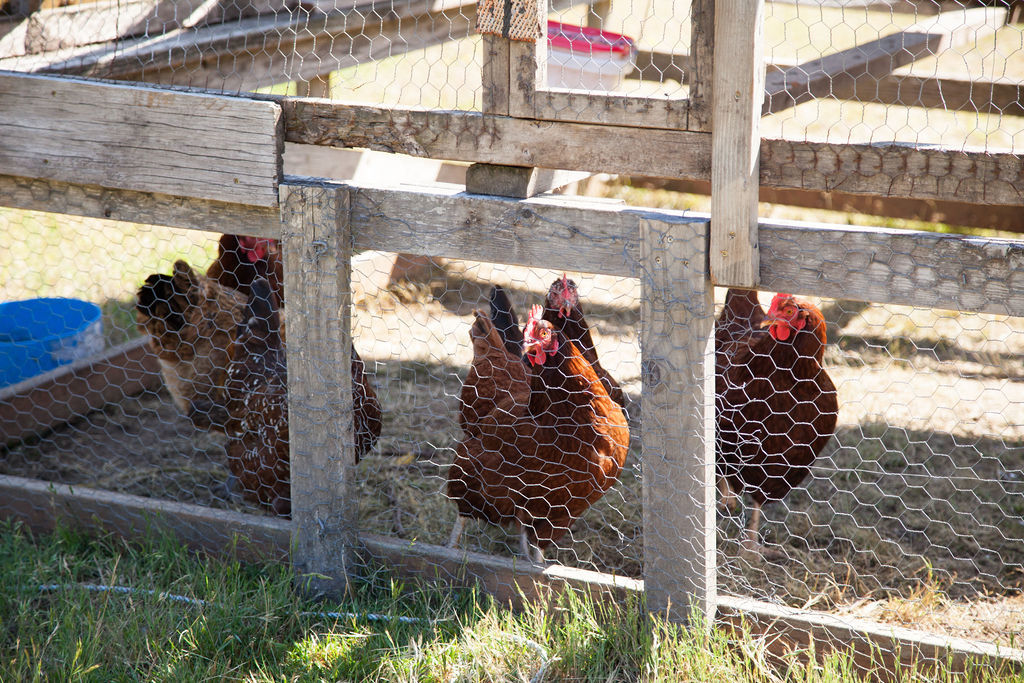I’m going to be sharing with you what we are doing differently on our homestead over what we’ve done in the past. I’ll share how we’re increasing our food production and some things that you might want to think about to increase your own food production where you live as well.

Now, I had already planned on increasing my production in several areas before we had the concern over the coronavirus (COVID-19), however, that doesn’t mean that I haven’t re-evaluated everything and made some more changes. And I hope you’re taking this time as an opportunity to evaluate where you need to improve as well.
Listen in below to the full podcast, Episode #252 Our Food Production Plan & How to Plan for Livestock Part 1 of the Pioneering Today Podcast, where we don’t just inspire you, but give you the clear steps to create the homegrown garden, pantry, kitchen, and life you want for your family and homestead.
If you’re new to gardening my new book – published at the beginning of January, The Family Garden Plan, walks you through every step of growing your own food. Whether it’s container gardening, raised bed gardening, in-ground, or a combination I take you from planning, seed-starting, direct sowing (planting seeds directly into the ground), putting stuff in the ground including fruit trees and perennials to crop rotation, companion planting, and when to harvest. I have charts that explain the signs of when to harvest and the safe ways to preserve that food. It’s literally the full circle of putting in a brand new vegetable garden, putting in your fruit trees and perennial plants and berries. Everything you need to know to raise a year’s worth of food for your family. If you don’t have a copy yet I highly recommend that you go and check it out. You can get some of the free planning worksheets on how much to plant per person for a year’s worth of food on the Family Garden Plan website for free, straight from the book.
If you’re new to me I’ll give you a little background on me. I’m a fifth-generation homesteader, so I’ve been raising a lot of my own food. My husband and I have been married 20 plus years and in that time I’ve had a vegetable garden every year. And for 13+ years we’ve been raising 100% of our own meat. We usually grow about 75% of our own fruit and over 60% of our own vegetables for my family of four to eat for a year.
Revelations
This pandemic has really opened my eyes, and I think that maybe the case for many people who are relatively self-sufficient as I would classify myself. It’s made me realize the areas I may have grown lax in or where we have holes in our self-sufficiency. It has definitely highlighted those areas that we’re more reliant on the stores than I had realized. I’m going to dive into the things that we’re going to be doing differently or that we plan to increase this year in the hope that it helps you.
Back in March, before everything started to go down here in the United States, I had noticed that the organic pasture-raised chicken at Costco was a very limited supply. Now, before you ask, yes, I raise my own meat, however, I occasionally want just some wings if we want to do party wings or sometimes I want some extra breasts. So I’ll purchase organic and pasture-raised and have found that in my area Costco had the best price. Remember, this low supply was before all this COVID stuff really started happening. I even mentioned the fact that their supply was not being replenished as normal. It was kind of weird to see and I had no idea what was going on. I didn’t do any research or anything. I don’t know if it had anything to do with being processed in China. I would like to think that organic, pasture-raised chicken is not packaged in China. I just noticed that the supply was limited.
Then, when all of the COVID-19 stuff started happening, especially here in Washington state since we were one of the first states with a hot spot, there was no chicken. It was completely wiped out. Of course, then, there was the toilet paper being wiped out. It was the first time in my experience that there were limitations on the number of items that we could purchase. We could only get one jug of milk, one package of butter, etc. Limits on food. Limits on how many people were even allowed into the store at one time and things were just wiped out. There was definitely a big demand and supply issue that happened in a relatively short amount of time. I’m sure a lot of you have experienced this as well where you live.
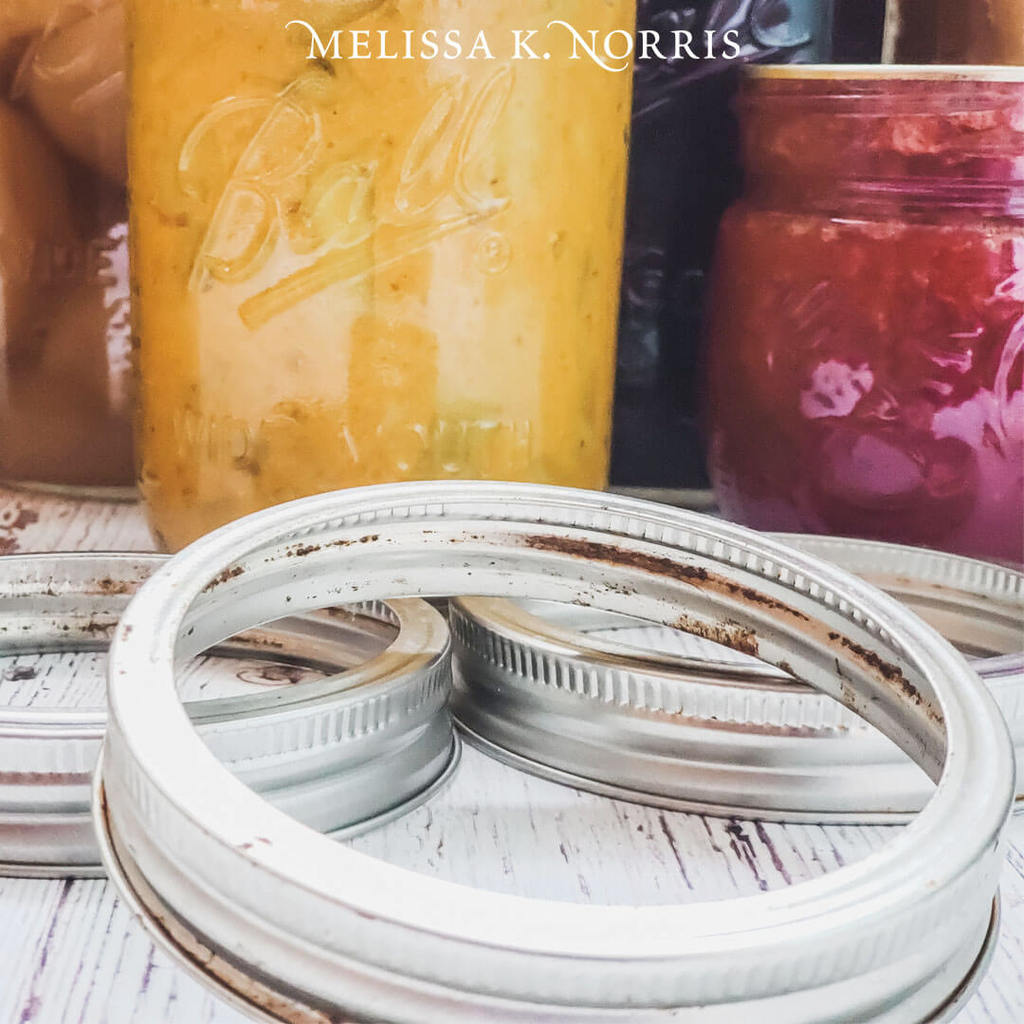
Evaluations
My husband and I took a look and got really serious in looking at what we have on hand because we’re coming to the end of most of last year’s preserved items. Looking at how much is left on hand until the crops that I have planted start producing. At the moment I have a lot of our cool weather crops in. So things like snow peas, onions, broccoli and cauliflower, and lettuce. I’m looking at what we canned and put up last and as well as what I dehydrated. Just all of our food supplies from what we grew and raised ourselves, which includes the meat.
So in looking at what we have on hand and determining what exactly we have on hand in the event, I wasn’t able to get to the store and get anything else I realized there were some things that we would fall short on. Tomato products being one of them. Now, if it was a normal year where things are a regular schedule with the kids going to school where they eat a lot of hot lunch (their choice) and sometimes taking their lunch. My husband pretty much always takes a lunch when he’s at work very rarely purchasing anything. But with all of us home, we’re eating all the meals at home, so we’re actually eating more from our food storage than we would under normal circumstances. I’m not going to the store to supplement fresh items as often as I usually do.
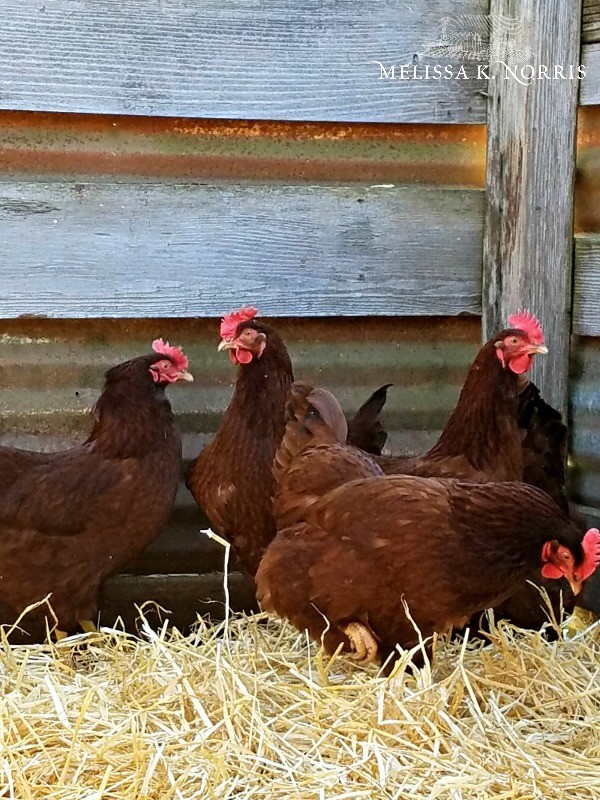
Therefore, I realized that if we really truly had to rely on what we were growing and raising our self, we would fall short or we would definitely be eating things that weren’t flavored as normal or I would have to cut out ingredients. We had made the decision back in March before a lot of the stay at home orders were extended that we were going to be raising our meat chickens this year. We had taken last year off because we had quite a bit of meat in the freezer so we didn’t want to have excess, we want to always be meeting out needs but not going beyond that so that we’re practicing good food rotation as well. So we’re doing meat chickens this year anticipating that there may not be the availability at the store of these items. I don’t know what our supplies are going to look like and what the supply chains will look like as we continue to do just essential businesses only in what’s considered essential, etc.
Our Plans
Meat
LAYING HENS: My nine laying hens provide us with enough eggs. I never have to buy eggs from the store. In fact, oftentimes I’ll have a little extra. So at the production rate and age of my hens we are not planning on adding any more laying hens.
MEAT CHICKENS: We’re definitely adding meat chickens this year.
I will say, if you’re planning on raising chickens this year, whether it’s meat chickens or laying hens or both, you need to get your orders in sooner rather than later. Just like we’ve seen with ordering seeds and garden supplies, people are ordering and the suppliers are having a tough time keeping up. This is an issue for fruit trees at the nurseries as well. There’s only so much available because it takes time. It’s not like we can just go to a factory and say, “Hey, we need to up production by 50%, we need to double.” There’s only so much planted out in order to seed save from in order to meet that demand. Same with the fruit trees. Same with meat chickens. They only have so many eggs planned based on the normal demand that they’re used to having and when there’s a higher demand, we’re going to see shortages and/or selling out of those items. Not to say that they won’t get more eggs and chicks in, but there’s a life cycle that must occur in order for that to happen.
What I’m saying here is that if you plan to order any of this, I recommend you do so now and don’t wait. If you’re new to raising meat chickens or laying hens and you’re getting chicks there are definite things you need to know about raising baby chicks for the first six weeks to make sure they don’t die and get off to a really healthy start. You can that info in my post, 6 Tips to Raising Baby Chicks for the First Six Weeks.
I’m ordering my meat chickens online from a new to me hatchery. They come very well recommended from several friends who raise a lot of birds and they are McMurray Hatchery. We do Cornish Cross. In the past, I’ve ordered mail-ordered from different hatcheries so I’m really familiar with doing that. I’m doing more meat chickens than we’ve done in the past because I anticipate that I’ll need to rely more on my meat source even more so. And if we’re doing the homeschooling thing in the fall, I want to make sure that we’re well-prepared with lots of food.
So we doubled our meat chickens that we’re raising.
If there’s enough interest (leave a comment, message me on Instagram or Facebook) on raising meat birds I would be more than happy to provide that for you. So let me know if that’s what you want and what your questions are regarding it.
PIGS: We had taken last year off from raising pigs. Again, we had a lot of meat in the freezer and we just kind of wanted a break to be honest from some of the stuff. Raising livestock definitely takes time. Is it worth it? Absolutely! But you have to factor in the time and expense. You have feed, infrastructure, different things like that.
As mentioned above, we’re doubling our meat chickens however, we are not doing that for the pigs. We’ll be keeping them at the same number we’ve raised in the past.
BEEF: Our beef production will be the same.
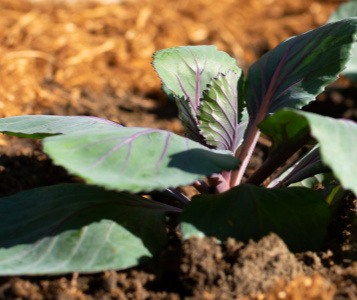
Produce & Herbs
We are upping things in the garden…and not just vegetables.
VEGETABLES: We are putting in another row of asparagus, however, I won’t be able to harvest that entire bed of asparagus until next year.
As I previously mentioned, we inventoried our tomato products supply and found it to be short of the desired amount. So we’re doubling the number of tomato plants. I normally do 18 to 20 plants and I have 38 starts right now growing under my grow lights in a corner of my living room.
We use a lot of onions along with tomatoes. So I doubled the number of onions too.
Increased my pepper plants as well. I have more garlic going.
We’re also putting in more cucumbers because my daughter loves pickles. I happen to like them too. We’re not running out of pickles, but I anticipate with us eating more from home, we’ll be having more things like salads and sandwiches than we normally do when the kids are in school. So we’re upping the cucumber production.
I’m also putting in more cabbage. We love cabbage. We love fermented Curtido, which is basically a Spanish version of sauerkraut. It’s not just cabbage and has ll these wonderful flavors. I like regular sauerkraut but I can take it or leave it. But the curtido version….it is SO good. I’ll be having a YouTube video coming out on it very shortly with a printable recipe for you because it’s one that you’re going to definitely want to make.
I’m keeping our winter squash approximately the same. It’s served us well and I’m not anticipating doubling up on it at all.
But we are definitely planning on doing a bit more Brussels Sprouts. It’s my husband’s, daughter’s, and my favorite vegetable. We love brussels sprouts. One of the things that I love about brussels sprouts is that they take 120 days so they’re not like the majority of brassicas that we grow a spring crop and a fall crop. They take a lot longer. So I plant mine when I do my warm-weather crops, which is usually mid to end of May. Then I don’t harvest them until they go through the first frost, which is about the end of September, beginning part of October, depending on the year.
I leave them in the ground and harvest them when we want. We harvested the last of our brussels sprouts through until February. Just them being out in the garden, doing absolutely nothing to them. That is my kind of food preservation! I didn’t have to cure them like I do the garlic, onions, and winter squash. I didn’t have to bring them in to ferment, can, dehydrate or freeze them.
Kale lasts just as long in the garden as the brussels sprouts, if not longer. They can have snow on them and they will be just fine. The only thing is that brussels sprouts don’t take freezing very well. Once they thaw after being frozen they’re mushy and are no good. Kale on the other hand, is amazing! As long as you don’t touch it while it’s frozen, it’ll be just fine.
FRUIT: We added in another seven fruit trees as well as some more elderberries as well. In the below video I walk you through planting once so that you get fruit and harvest off of them for 20+ years. I basically walk you through the proper care and doing proper planting of your fruit trees so that they get off to a really good start. Also, if you have existing fruit trees, we talk about things you need to look for and proper maintenance and pruning to keep them in tip-top shape for backyard fruit production.
The great thing about fruits is that they are perennials. I also put in 25 new strawberry plants, in addition to the elderberry and new fruit trees, including Paw Paws. I also have Sea Berries (aka Sea Buckthorn) coming. Sea Berries are an amazing fruit.
MEDICINAL HERBS: What’s interesting is that we had already decided that we were going to triple the amount of flowering perennial medicinal herbs here on the homestead. I had already decided that I wanted to do more of those for two reasons:
- For medicinal purposes so that I had them on hand
- I wanted to increase the beauty of the landscaping around our home
The decision to grow more of my own was reinforced once the pandemic hit. To me it was unexpected to see a lot of the online sources that I used to order the herbs that I’m not growing myself, or maybe not enough of, got hit hard and wiped out really quickly of their stock.
Finding ways to grow more of our stuff, including medicine, is really important, especially as we get into cold and flu season. It’s my hope, as I’m sure it is everyone else’s, that covid-19 will slow down once we get into the warmer months. I’m not trying to be pessimistic or fear-mongering, but I’m looking at things and what we can do to provide for our family. I believe that this will have a resurgence again. Although I hope not. But that’s what I’m anticipating will happen. And I want to make sure I’m prepared.
My husband recently put in new beds for all of the baby herbal starts I have in the house right now under grow lights. We’re going to be putting in a lot more so you can expect I’ll have a lot more videos and tours to show it all to you.
If you’re a member of The Pioneering Today Academy then you already have the March herbal deep dive. Every month we focus on a specific herb and diving into raising and harvesting them and the ways in which to use them medicinally. If you’re not currently a member and would like to be, sign up for our waitlist.
But this focus on increasing our medicinal herbs was already something we had planned on doing. I’m really glad we had those plans in place and we’re definitely forging ahead, but we’re also adding to the plans.
Infrastructure & Crop Extension Plans
We’re moving our high tunnel to a new location. It had gotten really bent and damaged by wind so we’re shoring that up and are totally able to salvage it. But we’re moving it to new ground because I’ve had it in the same spot and have been growing my tomatoes and peppers underneath it to avoid blight. Normally I would never tell you or advice, anybody, to plant their tomatoes and peppers in the same spot every year except mine have always been undercover, so they’ve never had any disease.
We decided it was time to fix the high tunnel, shore it back up, and move it to fresh ground. So I actually have a new 20×30 sq. ft. area of growing space. I’m going to be practicing more succession planting this year so that I can get more in. We’re doing more spring crops and I plan to do more fall crops so that we have food growing pretty much year-round…or very close to that.
Use What You Have & Don’t Delay
Like my husband said, if we’ve got the space, we’re going to be putting in more food this year than we ever have before. I know everybody’s space and experience is going to look different, but I highly recommend that you consider growing more this year than you did the year before. Really take an evaluation of the foods that your family eats and focus on growing that. That’s what I teach in my book, The Family Garden Plan, and that’s what I did with my own pantry. This is what’s led me to increase my garlic, onion, and tomatoes.
Another thing I’ve noticed is that we’re seeing a lot of people buying more seeds than ever because we have more people who are planning on doing a garden than ever before. You may have noticed that a lot of online seed places have to suspend orders for a few days to get caught up or they may be sold out of things. A lot of nurseries are selling out as well because people are focusing on growing and food production.
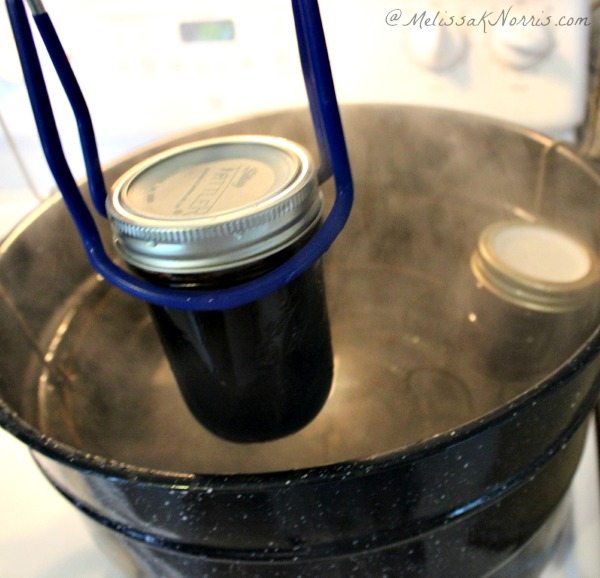
Food Preservation
What comes next? Well, it’s the preservation of the food. So you’ll need mason jars, canning lids, dehydrators…that kind of stuff. The majority of my preserving, whether canned or dehydrated, is put into mason jars because I only have so much freezer space. So I always like to have canning lids on hand. I do use the reusable Tattler lids. I have to be honest, I like them, but normally I can anywhere from about 400 to 500 jars per year for an average year. And out of those 400 to 500 jars of food that I can, I maybe have one jar that doesn’t seal every year. Very rarely do I have seal failure or do I have any jars that don’t seal using the regular metal lids.
But with the Tattler reusable lids, I have to say when I use them, I usually have one jar per run (canner load), that doesn’t seal when I use the Tattler lid. That’s significantly higher seal failure. When they do seal though, they’re sealed. They’re great that way. So normally I will use the Tattler lid on things that if it doesn’t seal I can put it into the freezer and it’s no big deal. So I’ll use them for things like jam and jelly, and applesauce. I don’t use them on my meat or vegetables because after being pressure canned them they’re fully cooked.
The reason I shared that with you is because I try to keep on hand enough canning lids to take me through a regular summer. You don’t want to store canning lids too long. A couple of years is fine for the metal lids. They store best in a cool location. You don’t want to have them where they’re exposed to a lot of heat because you don’t want that rubber to get too soft or to break down. I don’t know what the supply will look like this summer if we have a lot more people growing and needing to preserve the food they’ve grown.
It’s exciting to see all the new interest in growing food. It’s amazing and a good thing that’s coming out of this as we have more people gardening and growing their own food than ever before. But they will need to learn how to preserve this food and will need the supplies to do so. So I recommend that you think about how many jars you’ll be putting up. Do you have enough jars to meet that demand? Do you have enough canning lids? One of the places I get mine in bulk in a big sleeve for both wide and regular mouth canning lids is sold out but if you order now you can be put on a wait list to ship when the supply comes in. That’s what I had to do. Mine shipped within three days of one another, recently receiving them.
The great thing about ordering these supplies is that they won’t go to waste. They will be used within the next few years. I think it’s a wise move for us homesteaders to get ahead of the curve, anticipate your needs and make sure you have what you need.
Animals Need to Eat Too
We also made sure that we had enough chicken feed for the meat chickens and laying hens. Knowing how many weeks it’ll take to butcher the meat chickens were used in calculating how much feed we needed. We get it from a local grainery in bulk.
We did the same thing with pet food. I want to make sure that we have them taken care of just in case some of those places shut down. Things are moving and happening so fast these days that we just wanted to make sure that all the livestock that we’re bringing on the homestead are taken care of them.
Check in for Part 2 where I’ll be talking about the essentials and other basic items that we’re not able to produce and must be bought from the store.
Resources
- Toilet Paper Substitutes
- 6 Tips for Raising Baby Chicks for the First 6 Weeks
- Traditional Fire Cider Recipe & Benefits Guide Rosemary Gladstar
- What Fruit & Nut Producing Trees to Plant Now & Uncommon Plants that are Edible
- Where to Buy Heirloom Seeds
- How to Grow Food at Home
- McMurray Hatchery
- Pioneering Today Academy
- Melissa K. Norris – Modern Homesteading YouTube
- The Family Garden Plan
- Canning Lids
Other Articles You May Enjoy
- Growing a Garden & Raising Livestock Without Acreage
- Your Livestock Questions Answered
- Planning Your Livestock for a Year’s Worth of Meat Per Person
- 5 Tips on Raising Livestock for Food
- Maximizing Your Homestead for Profit & Production (With Joel Salatin)
- Commonly Believed Homesteading Myths
- Must-Have Pantry Items For Long-Term Storage
- How to Keep Animals Cool in Hot Weather
